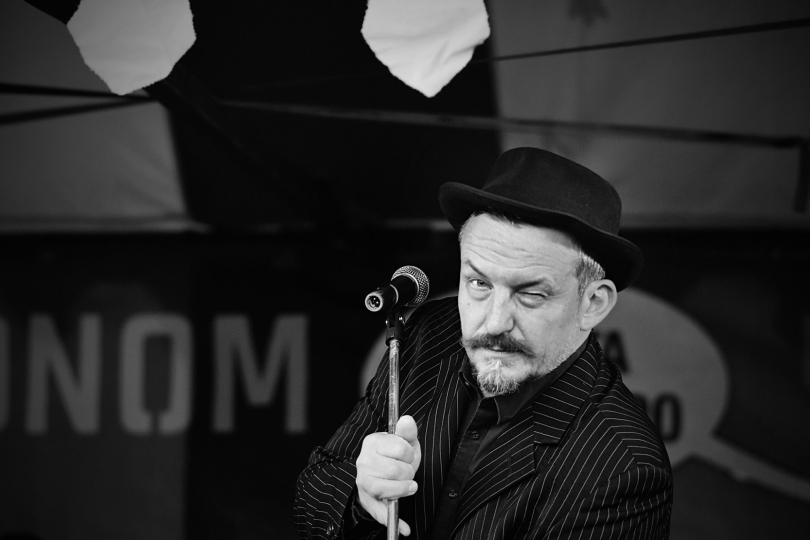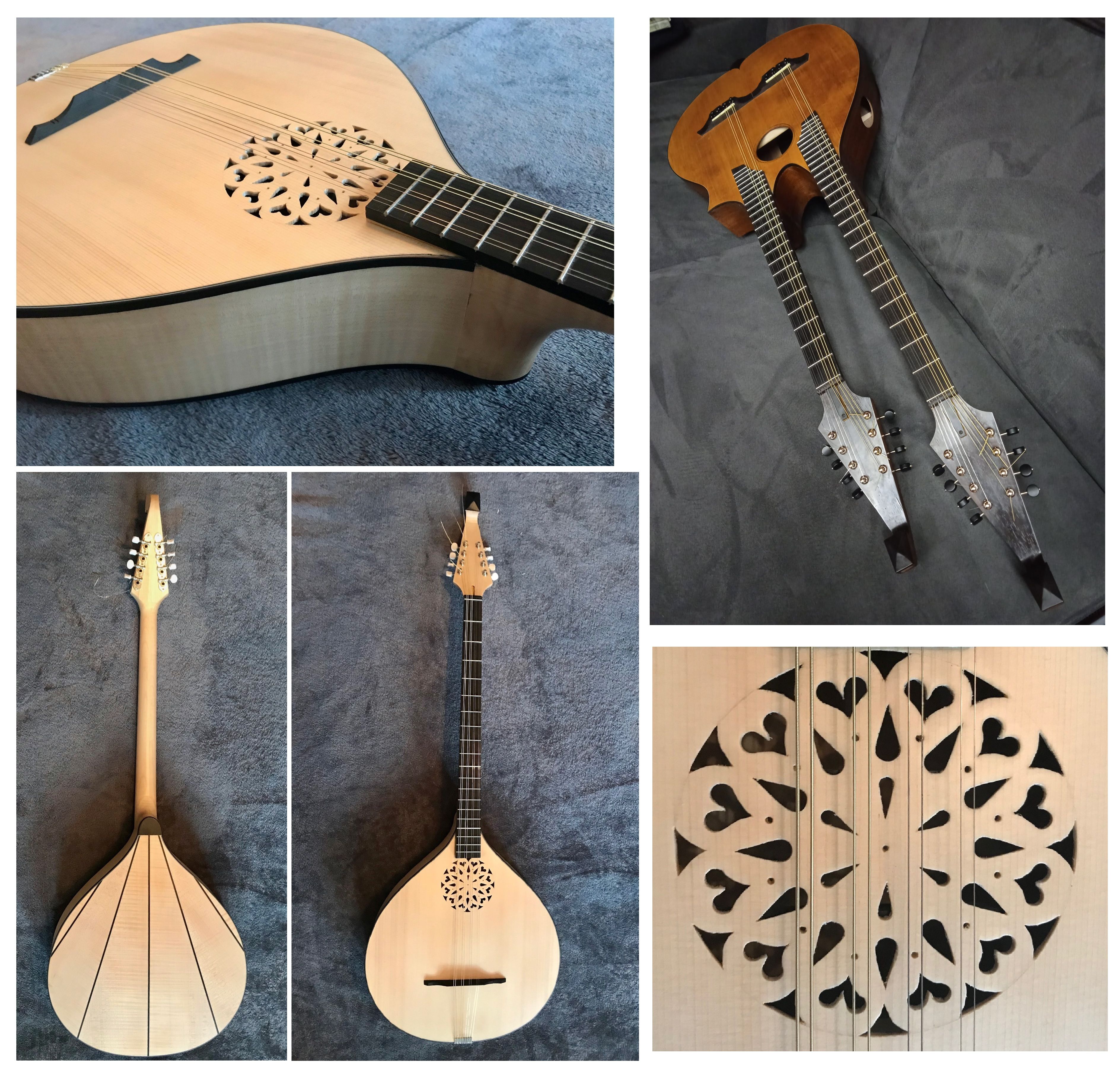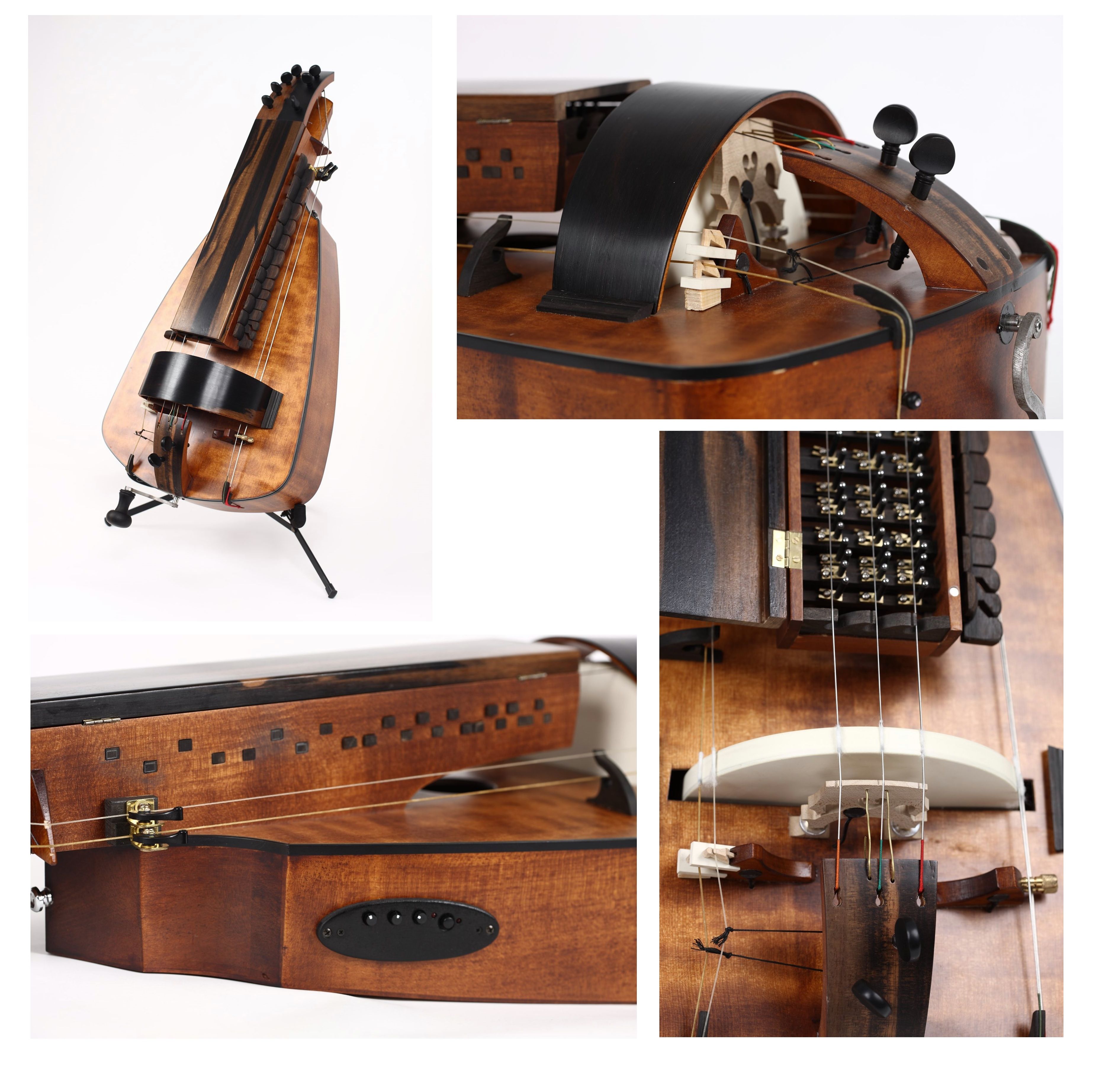
Dreamstruments #2: Honza Klíma (Wood and Strings)
There are many recurring stories among musical instrument makers. One of the most common would be, "I started building instruments because I couldn't get what I wanted." Nowadays, it seems impossible that you wouldn't get an instrument that you're going after, it's just that not everyone wants a Strat or a bass like Gene Simmons. Then some musicians need something special – and Prague maker Honza Klíma used to be one of them. From the very beginning, he dedicated his skills—shaped by experimentation and watching more experienced musicians—to traditional folk instruments that many of today's musicians find rather unconventional. Well, when was the last time you saw a hurdy-gurdy or nyckelharpa on stage?
For Honza, the path to the instruments that modern musicians might have only seen when playing the Kingdom Come game during the pandemic led through that fundamental need "to get the instrument he wanted". Leaving aside the very first attempts at a two-necked hybrid of electric bass and guitar that ended up in a fire, he started building his first stringed instruments while playing with the band Gothart. As Honza recalls, "that instrument I made was absolutely terrible and didn't play". Nevertheless, he persevered and improved, invented and built more instruments that did play.
At that time, on top of his typical amateur enthusiasm, Honza got inspired when meeting Jirka Mázl and Dalibor Bzirský, two masters in the field, and during his visits, "he kept picking their brains from them", as he says. "Then I met a carpenter who wanted to make guitars, and at the time, I needed to make cabinets, so we exchanged know-how. From him, I learned an awful lot of cabinetmaking, which made my job a lot easier."
Honza started making instruments outside the band's needs around the turn of the century. He moved from various plucked and stringed instruments to other interesting instruments that music almost forgot about for a while. Thanks to people like Honza Klíma, however, they still exist.
Cittern
The most typical instrument from Honza's workshop is still the cittern. A kind of hybrid of medieval instruments and Irish bouzouki, which was created based on the band's requirements and, without exaggeration, has found customers all over the world.
"I was looking for an instrument for the band that would encompass more keys; therefore, it has an extremely long scale length, so you can easily use more notes with the capodaster. At the same time, I wanted it to sound different from a regular guitar or mandolin, to differ as much from country music as possible. I wanted it to be an instrument that could do everything. If you feel like it, you can play chords and some modal stuff," says Honza.

The construction of the typical Fat Lady, as Honza calls the most popular pattern of the cittern, is quite straightforward: "As Mr Pilař, the violin maker would say, they're just boxes." Most often, it has a maple back and sides, a maple neck, ebony or rosewood fretboard and a spruce soundboard. "Because I'm also plain in decorating," explains Honza. "I like things that are very contrasting and simple. I don't really favour figurative woods either. Some people are into graining and veneers, but it reminds me of furniture from the 1970s. And experience tells me that maple plays best. Maple or maple and walnut. And then I really like mahogany as plain as possible. It's great to work with and the instruments play beautifully."
The Fat Lady, as the name suggests, is a nice piece of an instrument – to give you an idea, thanks to its long scale length and longer headstock with a typical "hook", it hardly fits into typical acoustic guitar cases.
Nyckelharpa
It is an instrument originally from Sweden, the first references date it back to the 14th or 15th century. Imagine a violin hanging on a strap like a guitar, with no worries about intonation on a fretless fretboard. First of all, because it doesn't have any. But you can find plenty of tangents on a nyckelharpa.
Honza first encountered the instrument in the early 1990s at a concert of the Oni Wytars band: "I was completely dumbfounded because I had never seen it before," he says of his fascination. "I sketched it, took pictures, and I really wanted to make it. Thank goodness I didn't because I absolutely didn't understand how it was supposed to work. And I didn't actually 'mature' until some 15 years later when I thought maybe it was time to give it a go."
At the same time, he mentions that interest in the nyckelharpa is now growing significantly among other musicians in Europe, which is changing the view of this instrument: "From a purely folk instrument, it has become an instrument that can be used to play baroque and modern music," adds Honza, pointing to the challenge that awaits the builder of an instrument from which the customer wants the look of a 16th-century instrument, but the functionality and comfort of a modern one.
Of course, the construction of instruments that have been preserved in records dating back 500 years is a bit of alchemy. Each maker approaches the instrument in a slightly different way, interpreting the proportions in their own way, and in their quest for the best possible results, they sometimes go by trial and error.
Honza has found his own design, which he believes brings maximum benefit: "I am capable of making a crazy thing according to someone's desires, but I prefer to stick to what I have already proven. This custom stuff is a lot of fun, it's just always a bit of a lottery. You're guessing how it's going to behave, but because of the different shapes and malleability of the material, it doesn't always turn out the way you expect."

Hurdy-gurdy
This is another typically "medieval" instrument, which, like the nyckelharpa, is characterised by tangents. The difference is in the way the instrument is played. While a bow is used to make a sound on the nyckelharpa, the hurdy-gurdy has a wooden wheel with a crank which the player turns to give the instrument dynamics and a rhythmic "drone", i.e. a bottom-held note.
Nowadays, the hurdy-gurdy is experiencing a small renaissance. "Most of the customers are girls," says Honza. "They have seen the trend of beauties playing hurdy-gurdies, which is great," he laughs, explaining that folk metal bands like Eluveitie, in which traditional instruments often play a big role, are behind the wave of interest.
Honza's signature with gurdy-gurdies is similarly specific to that of other instruments: 'I've found one type of construction that I'm happy with, and I'm looking for ways to improve it further. I'd like to make it to volume, but with each instrument to look a little different. There are a lot of details with the hurdy-gurdy that will change the look, but it's just tripes like one will glow and stuff. But of course, the main thing is that they should play well."

In the workshop, Honza works in a relatively old-fashioned way. His instruments are almost exclusively handmade, although he admits that with the growing interest in his nyckelharpas and hurdy-gurdies, he has had to make some concessions. "I always thought everything could be hand-made, but when you get an increase in orders, you find you can't handle it anymore. So I use the help of CNC. For a few things. But I don't want to be a programmer. I don't know how to go about it, because it would have been much easier to have it all done by machine and then just polish it with emery, but I don't think there would be anything left of the craft," he explains his approach.
If you have found an error or typo in the article, please let us know by e-mail info@insounder.org.

